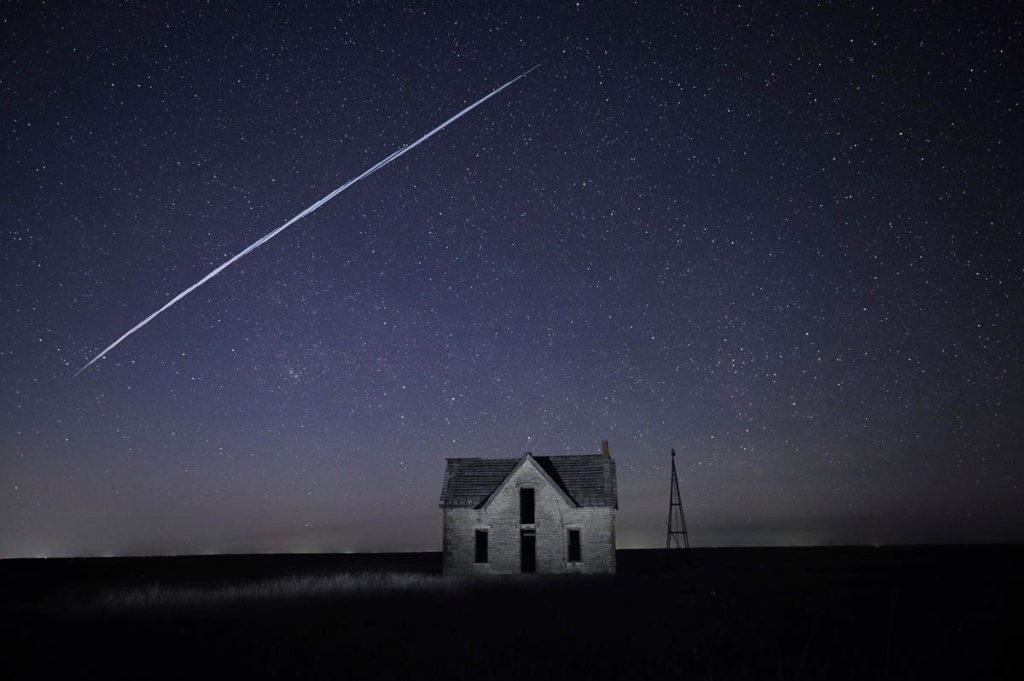Satellites disintegrate and burn up over earth all the time; it’s actually done by design in most cases to avoid unnecessary space junk in orbit. But in the case of SpaceX Starlink 30167, the orbiting broadband router failed to reach its intended orbit and Wednesday night it generated some serious fireworks as it re-entered the atmosphere.
Starlinks are small as satellites go, but with solar arrays fully extended, they measure 100 feet across. A meteor of that diameter would be nearly comparable to the bolide that blew out windows when it exploded over Russia in 2013.
Fortunately, a satellite fluttering its lightweight solar panels in the sky is not nearly so massive or dense as most meteors, so your average Starlink poses no threat to anything or anyone on the ground. Instead the intense heat and friction generated as it streams through the atmosphere burn it all up to essentially nothing.
Along the way to its demise, Starlink 30167 puts on quite the high-altitude light show:
The flaming satellite was caught from multiple angles as it broke up over Puerto Rico. It looks something like a very dramatic and slow-moving meteor. In fact, that’s how you know it’s not a meteor, which are typically moving at much higher speeds and burn very bright before flaming out after just a few seconds.
A re-entering spacecraft, on the other hand may be visible for up to a minute or longer as it streaks across the sky.
As NASA Solar System Ambassador Eddie Irizarry points out at EarthSky, it’s also typically possible to see the satellite breaking up and fragmenting into smaller pieces, which is less common with meteoroids and shooting stars. These bits of cosmic detritus tend to be smaller and more compact and dense.
In the case of some really big bolides, like the one that caused hundreds of injuries in Russia a decade ago, you might also see some fragmentation and the whole thing may last longer than a few seconds. But in such an unusual case we could probably also expect to see significant smoke trailing the fireball, as well as a sonic boom and maybe even an airburst. Such an event seems to only happen once or twice a century.
Re-entering satellites, on the other hand, will only becoming a more spectacular sight as Elon Musk and others continue to launch unprecedented numbers into low-Earth orbit.
Read the full article here










